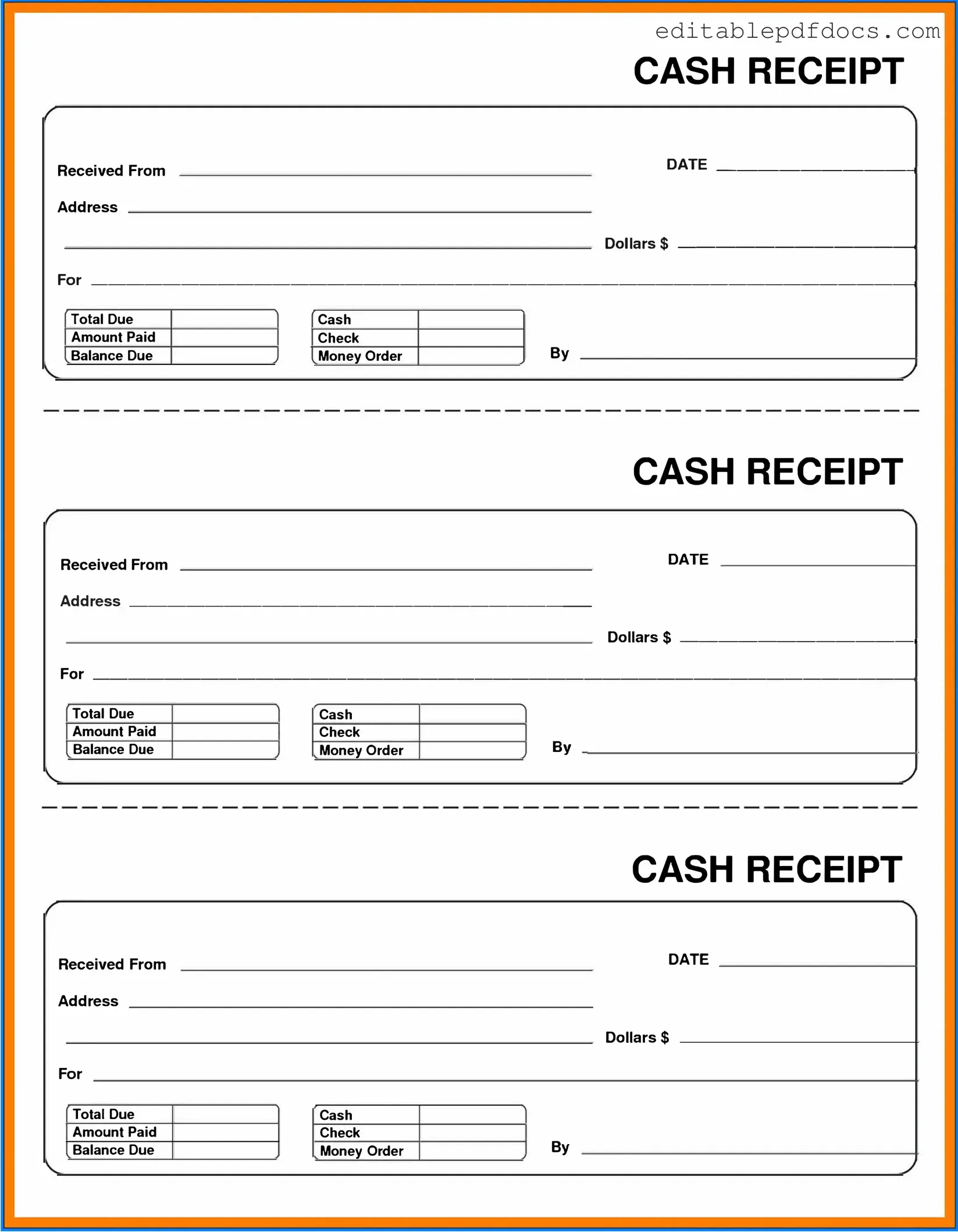The Cash Receipt form serves as a vital document in various financial transactions, providing a clear record of cash received by an organization. This form typically includes essential details such as the date of the transaction, the amount of cash received, and the purpose of the payment. Additionally, it may contain information about the payer, including their name and contact details, which helps in maintaining accurate records. Often, the form is signed by both the receiver and the payer, ensuring accountability and transparency in the exchange. The structured layout of the Cash Receipt form facilitates easy tracking and auditing of cash inflows, making it an indispensable tool for businesses and organizations in managing their finances effectively. By standardizing the process of documenting cash transactions, the form helps mitigate discrepancies and enhances the overall financial integrity of an organization.
